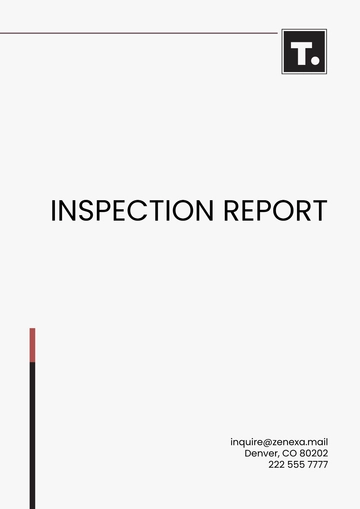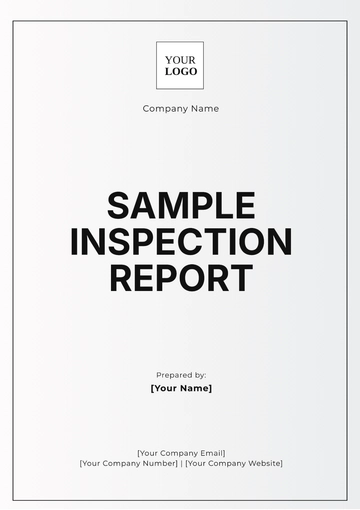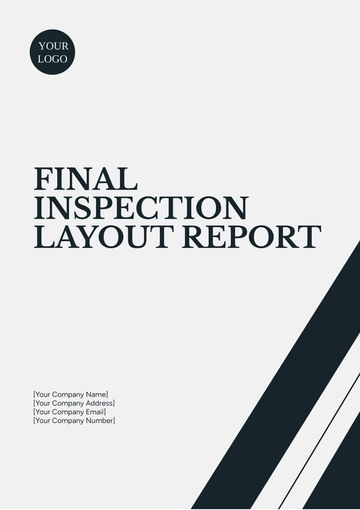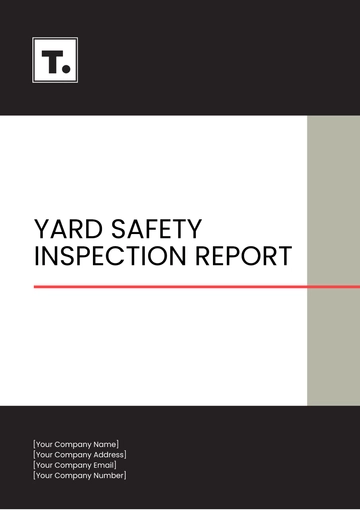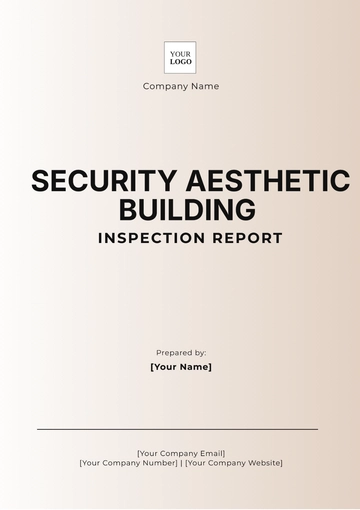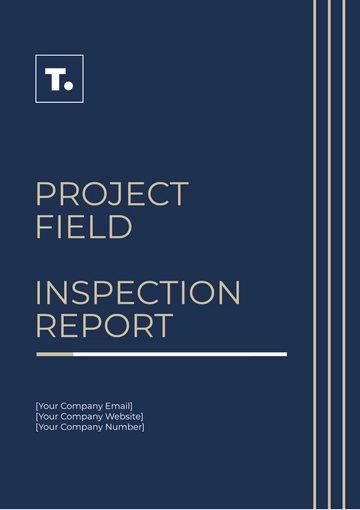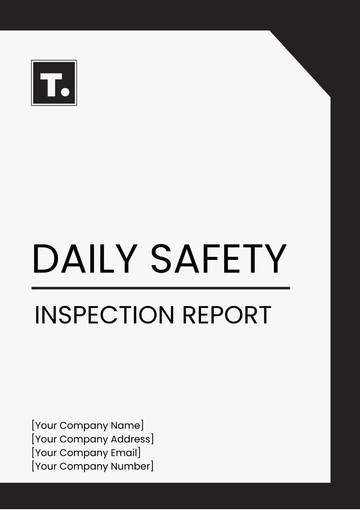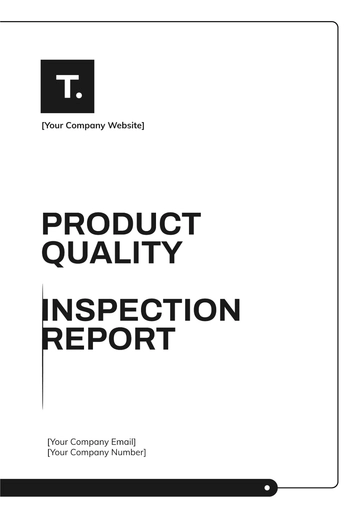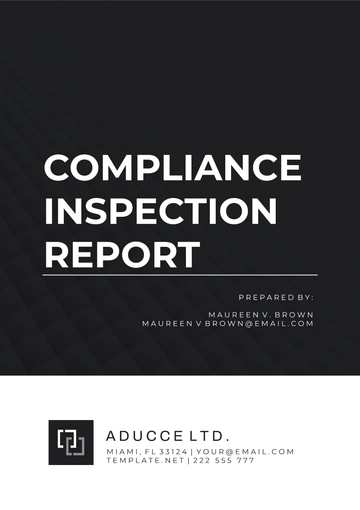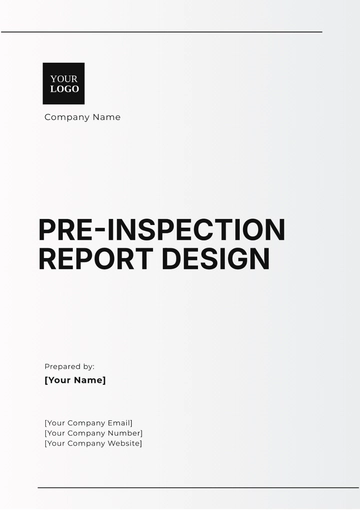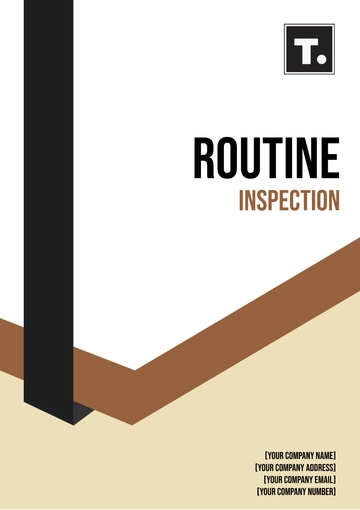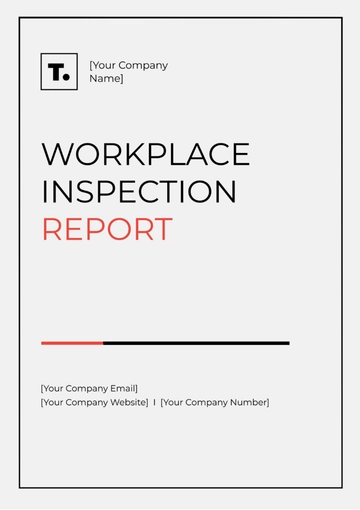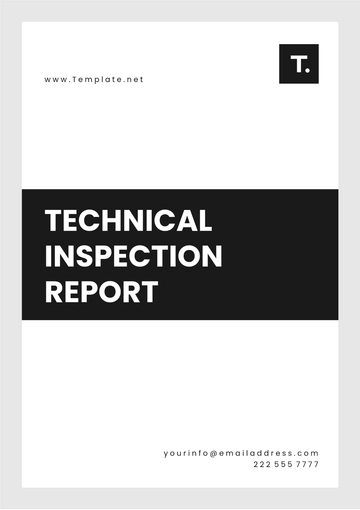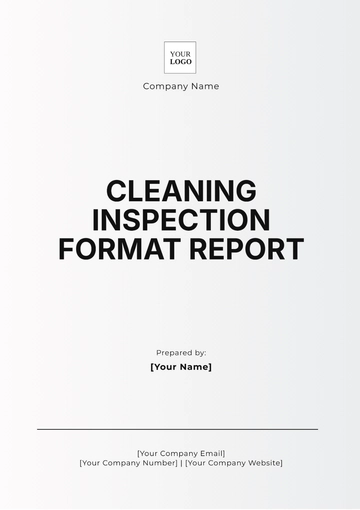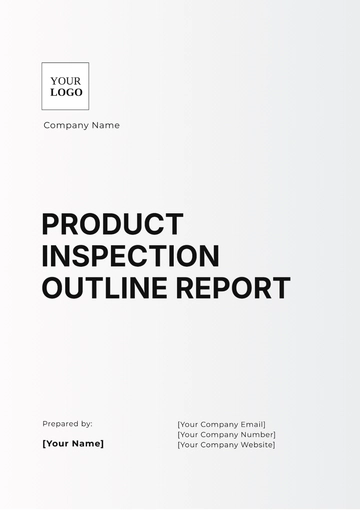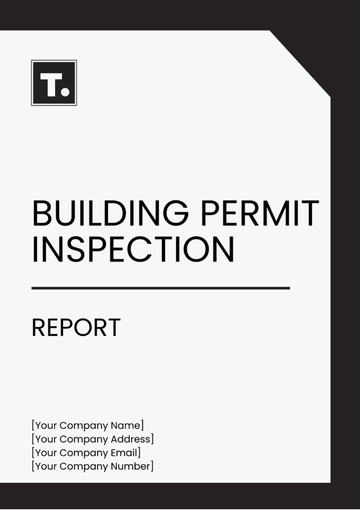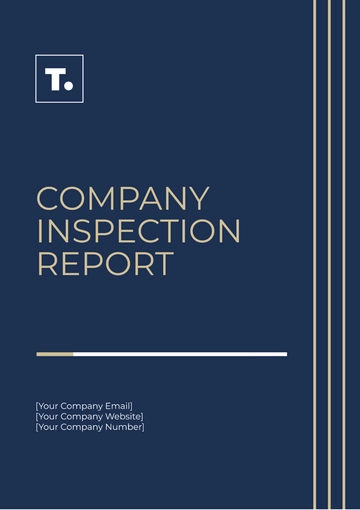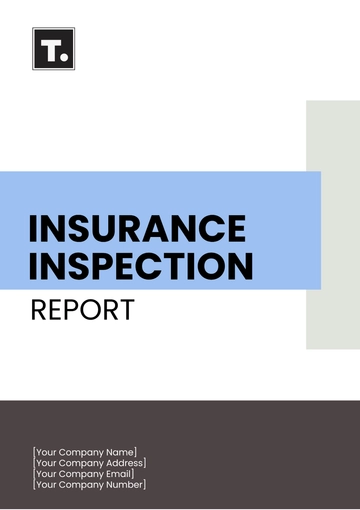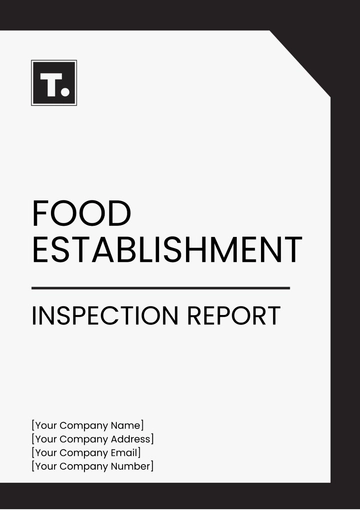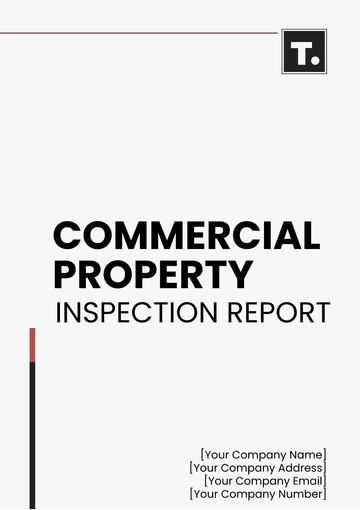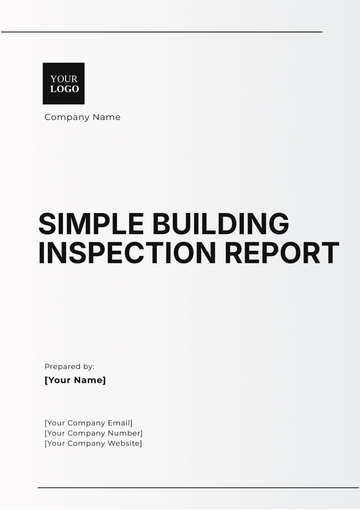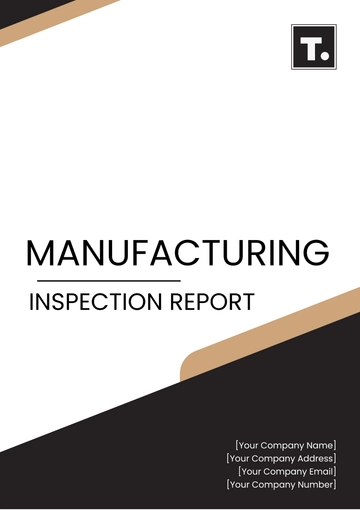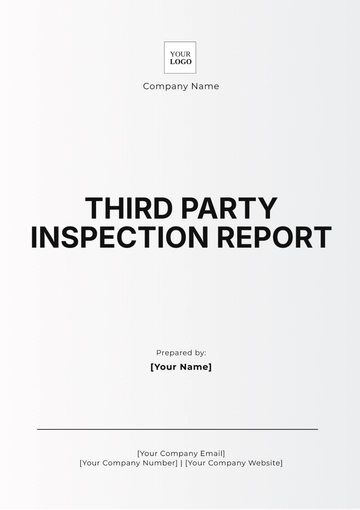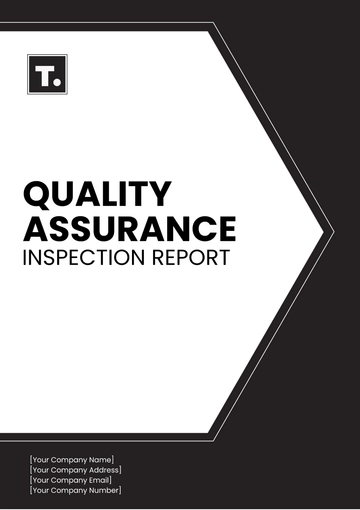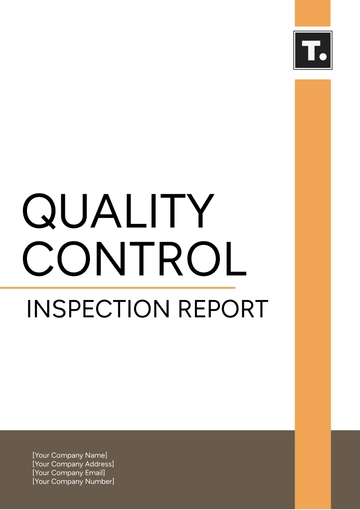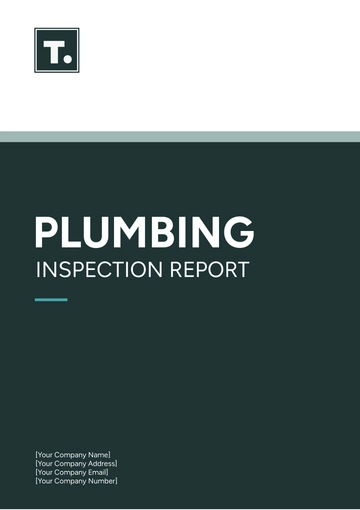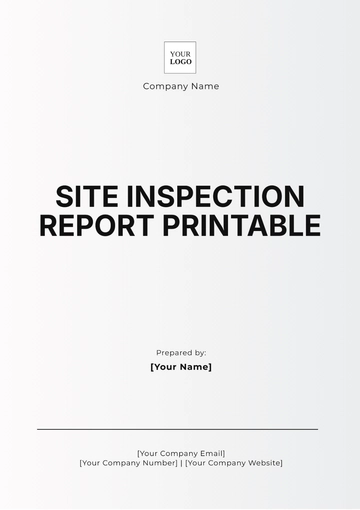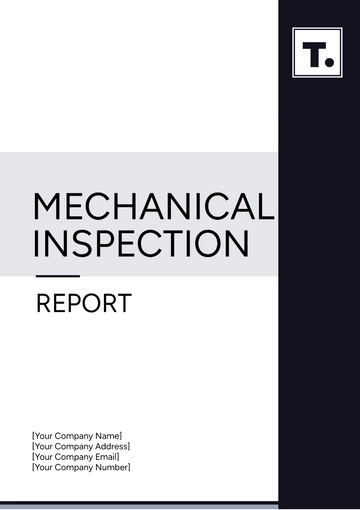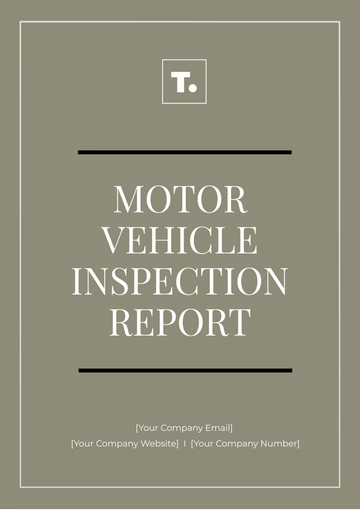Free Manufacturing Product Inspection Report
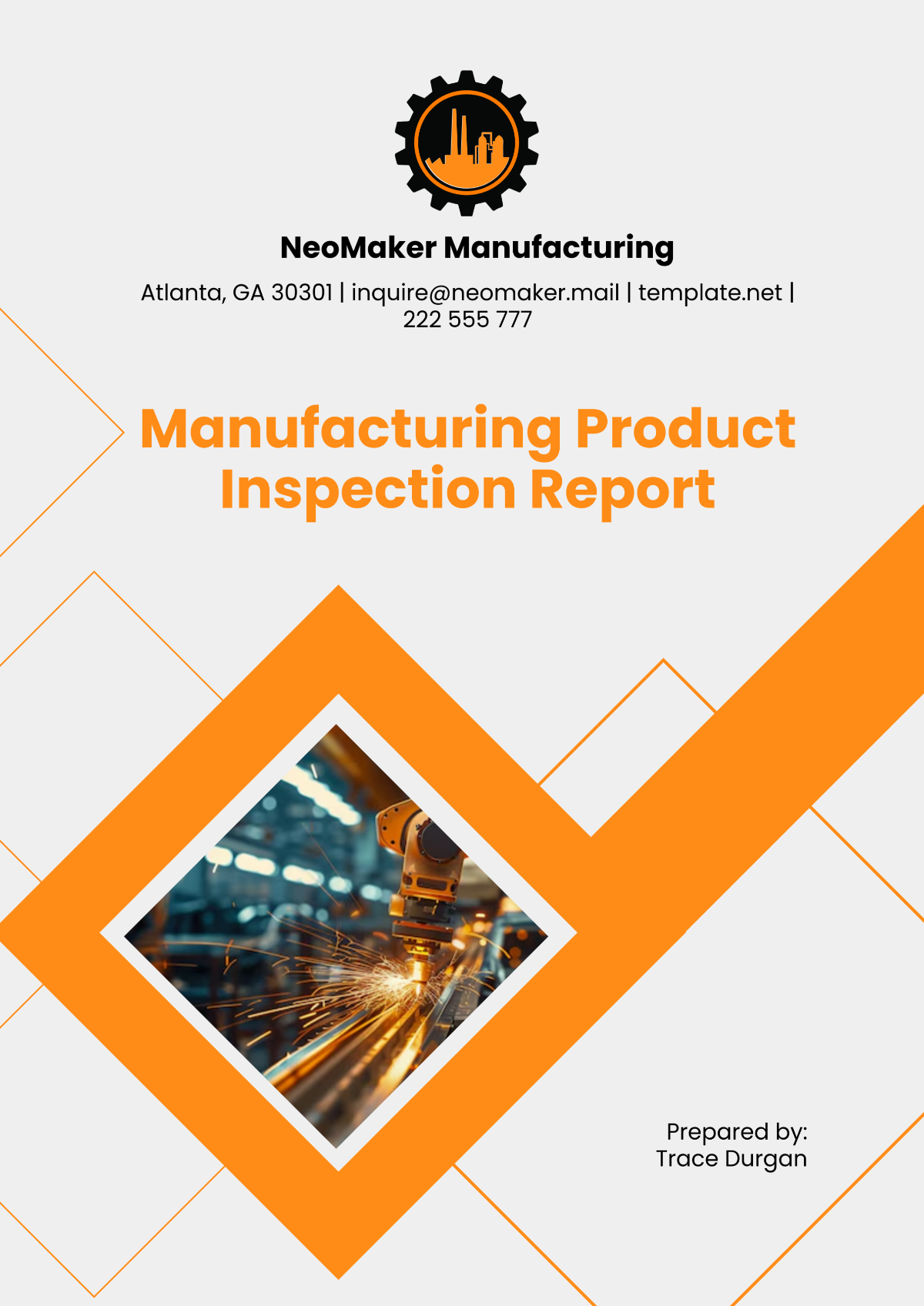
I. Introduction
The Product Inspection Report for [2051] outlines the detailed analysis of our inspection procedures, key metrics, and outcomes to ensure product quality and safety. As a manufacturing company committed to excellence, we conduct thorough inspections to maintain high standards, comply with regulations, and meet customer expectations. This report provides insights into inspection performance, highlights critical challenges, and identifies opportunities for improvement.
II. Inspection Metrics Overview
This section focuses on the key metrics tracked during product inspections throughout the year, offering insights into defect rates, inspection coverage, and compliance with industry standards. The data is crucial for identifying trends and making informed decisions for quality assurance.
A. Defect Rates by Quarter
Defect rates remained consistent at around [2%] for most of the year, showing effective quality control mechanisms. A slight spike in [Q1] defect rates prompted additional training and process reviews, leading to an improved performance in subsequent quarters.
Inspected Units:
Defective Units:
B. Inspection Coverage by Product Line
Electronics maintained the highest inspection rate, reflecting the critical need for precision in this category. Consumer goods inspections were slightly lower, suggesting potential areas for increased focus.
Product Line | Units Produced | Units Inspected | Inspection Rate |
|---|---|---|---|
Electronics | 20,000 | 19,800 | 99% |
Consumer Goods | 30,000 | 28,500 | 95% |
Industrial Equipment | 15,000 | 14,400 | 96% |
III. Compliance and Safety Standards
Ensuring compliance with industry and safety standards is critical to maintaining product quality and protecting both consumers and the company’s reputation. This section evaluates how the company’s inspection processes align with current regulations and internal benchmarks.
Regulatory Compliance: The inspection confirmed that [98%] of the products met the mandatory industry standards set by regulatory bodies such as ISO and ASTM. This adherence ensures the company avoids penalties and continues its eligibility for certifications.
Internal Quality Benchmarks: All products underwent rigorous testing to meet internal benchmarks, which are [10%] stricter than external requirements. This practice reflects the company’s commitment to exceeding industry norms.
Worker Safety Standards: The inspections also included a review of the production environment. It was found that [95%] of facilities met OSHA safety standards, with plans to address minor non-compliance issues.
Documentation and Traceability: All products inspected had proper documentation of raw material sources and production logs. Traceability is crucial for resolving potential recalls efficiently.
Overall, compliance with external and internal standards was commendable. Areas requiring attention, such as a few instances of incomplete documentation, highlight improvement opportunities. Strengthening compliance practices will enhance the company's reputation and operational efficiency.
IV. Key Findings
This section summarizes the primary insights gleaned from the 2051 product inspections. It provides actionable information that influences future strategies for quality and safety improvement.
Defect Rates: The inspection revealed a [3%] defect rate across all product lines, with the majority of issues arising from assembly inconsistencies. Immediate adjustments to training and processes are recommended.
Customer Complaints Linked to Defects: Data indicated that [15%] of complaints over the past year were directly tied to manufacturing defects. By addressing these issues, customer satisfaction can significantly improve.
Equipment Reliability: Malfunctioning machinery accounted for [20%] of the identified product defects. Upgrading equipment or improving maintenance schedules will mitigate these problems.
Inspection Coverage: [98%] of the production output was thoroughly inspected, demonstrating an effective coverage rate. However, a small portion of overlooked products highlights a need for tighter oversight.
The findings indicate that while the overall product quality is high, targeted improvements in assembly processes and equipment maintenance are necessary. Leveraging successful product lines as models can help replicate quality standards across the board.
V. Challenges Identified
Despite our successes, several challenges were identified that require attention to maintain and improve quality standards.
Staffing Shortages: Limited availability of certified inspectors during peak production seasons led to delays in the inspection timeline. Hiring challenges resulted in an overreliance on temporary staff, impacting consistency.
Technology Limitations: Outdated equipment slowed down the defect detection process for certain product lines. Integration issues with automated inspection systems created inefficiencies.
Training Gaps: Insufficient training programs for new hires led to inconsistencies in adherence to inspection protocols. Limited advanced training sessions for senior inspectors hindered skill enhancement.
Documentation Issues: Delayed reporting of inspection data impacted decision-making processes. Lack of standardized formats for documenting inspection findings caused inefficiencies.
VI. Recommendations
To address the challenges and further enhance product inspection processes, the following recommendations have been proposed:
Recruitment and Staffing: Develop targeted recruitment campaigns to attract certified inspectors, especially during peak seasons.
Technology Upgrades: Invest in advanced inspection equipment to improve defect detection speed and accuracy. Conduct a systems audit to streamline integration between automated systems and manual inspections.
Training Programs: Expand training modules for new hires, emphasizing practical applications of inspection protocols. Schedule quarterly refresher courses for experienced inspectors to stay updated on industry standards.
Streamlined Documentation: Implement standardized formats and digital tools for real-time reporting of inspection results. Train staff on the new documentation systems to ensure timely and accurate reporting.
VII. Conclusion
The Product Inspection Report for [2051] highlights the company’s commitment to maintaining high-quality standards and addressing challenges proactively. While successes in defect reduction and compliance are commendable, the outlined challenges provide opportunities for growth. By implementing the recommendations, [Your Company Name] can further enhance its inspection processes, ensuring continued excellence in product quality and safety in the coming year.
- 100% Customizable, free editor
- Access 1 Million+ Templates, photo’s & graphics
- Download or share as a template
- Click and replace photos, graphics, text, backgrounds
- Resize, crop, AI write & more
- Access advanced editor
Ensure product quality with the Manufacturing Product Inspection Report Template on Template.net. This editable and customizable template provides a structured approach to document inspection results, defect analysis, and corrective actions. Personalize it using the Ai Editor Tool to meet specific quality control objectives and client expectations. Download our template now!
You may also like
- Sales Report
- Daily Report
- Project Report
- Business Report
- Weekly Report
- Incident Report
- Annual Report
- Report Layout
- Report Design
- Progress Report
- Marketing Report
- Company Report
- Monthly Report
- Audit Report
- Status Report
- School Report
- Reports Hr
- Management Report
- Project Status Report
- Handover Report
- Health And Safety Report
- Restaurant Report
- Construction Report
- Research Report
- Evaluation Report
- Investigation Report
- Employee Report
- Advertising Report
- Weekly Status Report
- Project Management Report
- Finance Report
- Service Report
- Technical Report
- Meeting Report
- Quarterly Report
- Inspection Report
- Medical Report
- Test Report
- Summary Report
- Inventory Report
- Valuation Report
- Operations Report
- Payroll Report
- Training Report
- Job Report
- Case Report
- Performance Report
- Board Report
- Internal Audit Report
- Student Report
- Monthly Management Report
- Small Business Report
- Accident Report
- Call Center Report
- Activity Report
- IT and Software Report
- Internship Report
- Visit Report
- Product Report
- Book Report
- Property Report
- Recruitment Report
- University Report
- Event Report
- SEO Report
- Conference Report
- Narrative Report
- Nursing Home Report
- Preschool Report
- Call Report
- Customer Report
- Employee Incident Report
- Accomplishment Report
- Social Media Report
- Work From Home Report
- Security Report
- Damage Report
- Quality Report
- Internal Report
- Nurse Report
- Real Estate Report
- Hotel Report
- Equipment Report
- Credit Report
- Field Report
- Non Profit Report
- Maintenance Report
- News Report
- Survey Report
- Executive Report
- Law Firm Report
- Advertising Agency Report
- Interior Design Report
- Travel Agency Report
- Stock Report
- Salon Report
- Bug Report
- Workplace Report
- Action Report
- Investor Report
- Cleaning Services Report
- Consulting Report
- Freelancer Report
- Site Visit Report
- Trip Report
- Classroom Observation Report
- Vehicle Report
- Final Report
- Software Report
